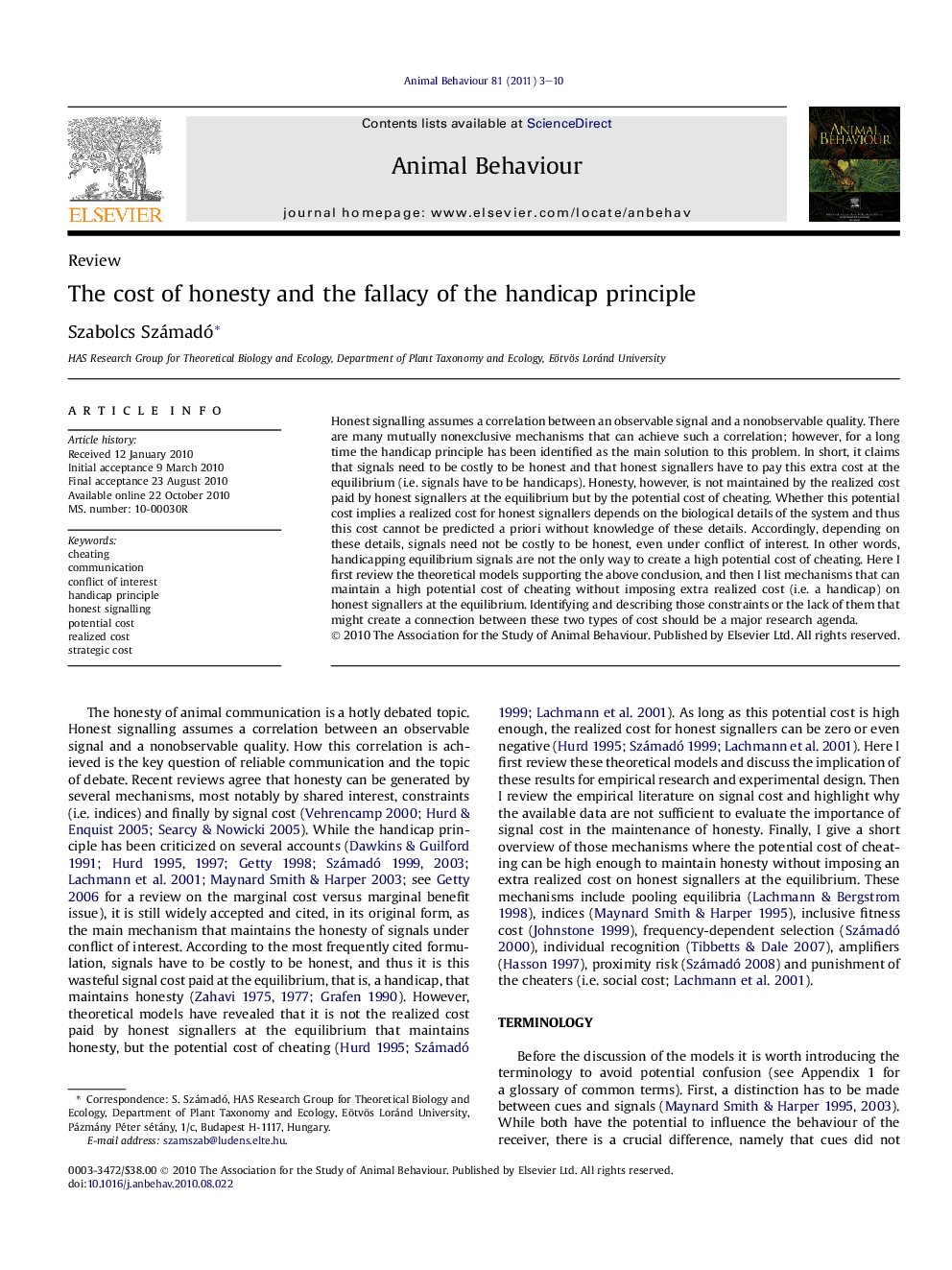| Article ID | Journal | Published Year | Pages | File Type |
|---|---|---|---|---|
| 10971024 | Animal Behaviour | 2011 | 8 Pages |
Abstract
Honest signalling assumes a correlation between an observable signal and a nonobservable quality. There are many mutually nonexclusive mechanisms that can achieve such a correlation; however, for a long time the handicap principle has been identified as the main solution to this problem. In short, it claims that signals need to be costly to be honest and that honest signallers have to pay this extra cost at the equilibrium (i.e. signals have to be handicaps). Honesty, however, is not maintained by the realized cost paid by honest signallers at the equilibrium but by the potential cost of cheating. Whether this potential cost implies a realized cost for honest signallers depends on the biological details of the system and thus this cost cannot be predicted a priori without knowledge of these details. Accordingly, depending on these details, signals need not be costly to be honest, even under conflict of interest. In other words, handicapping equilibrium signals are not the only way to create a high potential cost of cheating. Here I first review the theoretical models supporting the above conclusion, and then I list mechanisms that can maintain a high potential cost of cheating without imposing extra realized cost (i.e. a handicap) on honest signallers at the equilibrium. Identifying and describing those constraints or the lack of them that might create a connection between these two types of cost should be a major research agenda.
Related Topics
Life Sciences
Agricultural and Biological Sciences
Animal Science and Zoology
Authors
Szabolcs Számadó,
